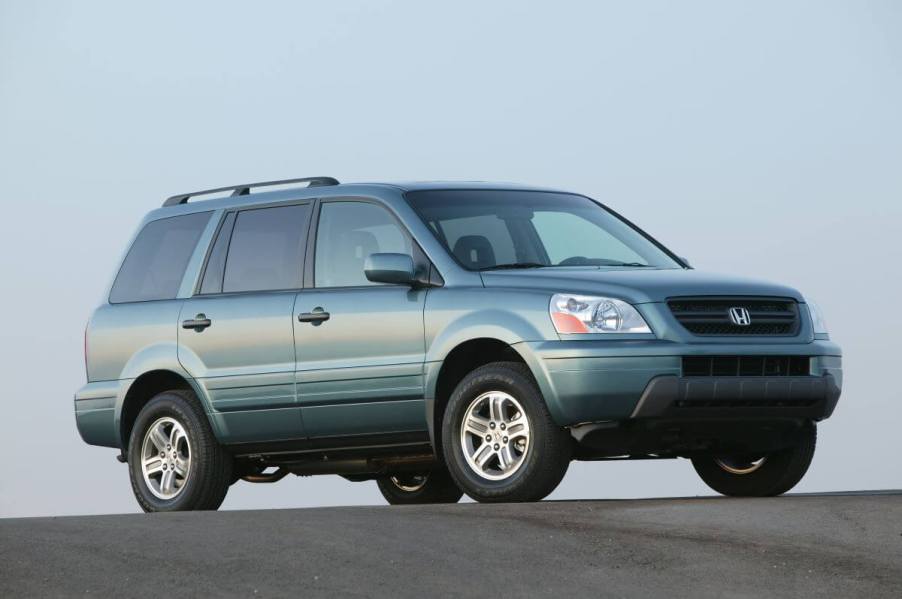
5 Honda Pilot Years to Avoid
Not all model years of the same vehicle are created equal. Some model years of a given vehicle, like the Honda Pilot, end up being among the best and most reliable cars you’ve ever owned. Others are riddled with maintenance problems so see which Honda Pilot years to avoid.
What are the Honda Pilot years to avoid?
Most of the Honda Pilot years to avoid are pretty old. In fact, some of them are 20 years old. In recent years, the Honda Pilot has made tons of progress toward reliability and quality. However, if you’re looking for a used model watch out for the most problematic years.
The worst Honda Pilot models:
- 2003 Honda Pilot
- 2005 Honda Pilot
- 2009 Honda Pilot
- 2010 Honda Pilot
- 2016 Honda Pile
2003 Honda Pilot
According to the consumer site CarComplaints, 2003 is the most problematic model year for the Honda Pilot, notably because of transmission issues.
Owners of the 2003 Honda Pilot have experienced serious transmission problems like difficulty shifting gears, slipping, transmission jerks, and premature failure.

The majority of owners reported having to replace the transmission, while others had the torque converter and transmission rebuilt.
On average, the problems surface around the 123,600-mile mark. Repair costs, on average, are $3.400.Other owners reported issues with engine and oil consumption, electrical system, suspension, and timing belt.
2005 Honda Pilot
The problems with the 2005 Honda Pilot are similar to those of the 2003 model year. These Pilot models are also plagued by transmission issues, including failing to engage, fluid leaks, rough shifting, slipping, and total transmission failure.
Transmission fluid leaks are reported to start around 122,000 miles, costing $2,100 for repairs. Drivers replacing the transmission experienced failure around 131,000 miles, with a repair cost of $3,400.
There are also reports of bad torque converters around 111,000 miles, with a repair cost of $4,800. Owners also reported troubles with the engine, power steering, and suspension.
2009 Honda Pilot
At one point the 2009 Honda Pilot models got the “Seal of Pretty Good.” With the ongoing troubles of this model, the site has since taken the distinction back.
The biggest problem plaguing 2009 models is the engine. There was a class-action lawsuit involving this and other Honda models burning excessive oil.
On average, the problem starts around 95,000 miles for the Pilot and costs $3,400 for the repair. One owner said that repeated incidents eventually caused the catalytic converter to “shred.”
Worse were reports of engine failure which happens on average around 114,000 miles, costing up to $7,200 to fix.
Additional reported problems included issues with the vehicle’s paint, suspension, transmission, power steering, and timing belt.
2010 Honda Pilot
The engine problems and oil burning continued in the 2010 models of the Honda Pilot. The problem surfaces on this model year around 97,000 miles, costing $3,500 to repair. Some owners had to add oil every 1,000 miles and often replaced the spark plugs.
Owners also reported problems with the vehicle pulling to one side or the other while driving and vibration, making for a noisy cabin.
Both issues are reported to occur before the 50,000-mile mark, with owners frustrated that the automaker really offered no solutions. Other issues were reported with the brakes, power steering, and transmission.
2016 Honda Pilot
The 2016 model is another one of the Honda Pilot years to avoid. This model year is the first of the redesigned third generation of the Honda Pilot. The top three issues with this model seem to occur before the 60,000-mile mark.
Fuel injector issues happen around 59,000 miles and generally require replacement, costing an average of $1,400 to repair.
The transmission is known to jerk around the 42,000-mile mark, with repairs costing $290. There are also many reports of transmission failure for this model that occur around 51,000 miles and cost $6,000 to $10,000 for replacement.
There are also reports of issues with premature brake wear, power steering, and A/C compressor failure.




